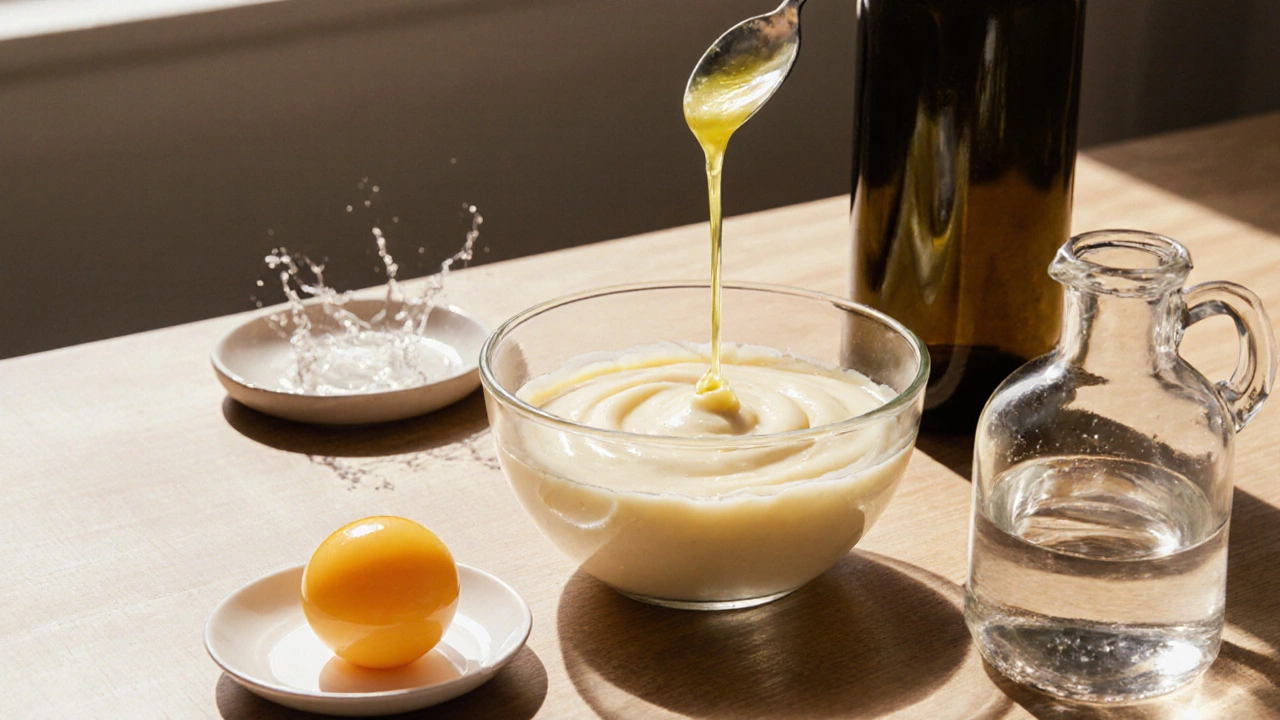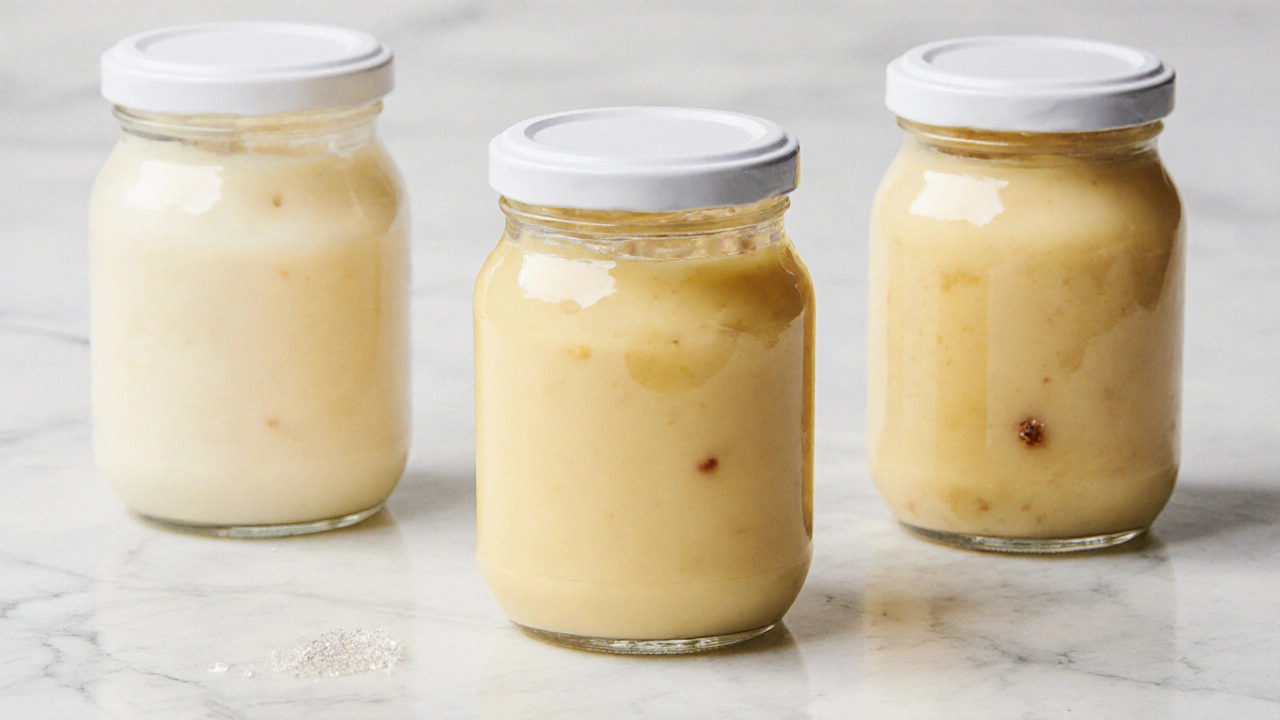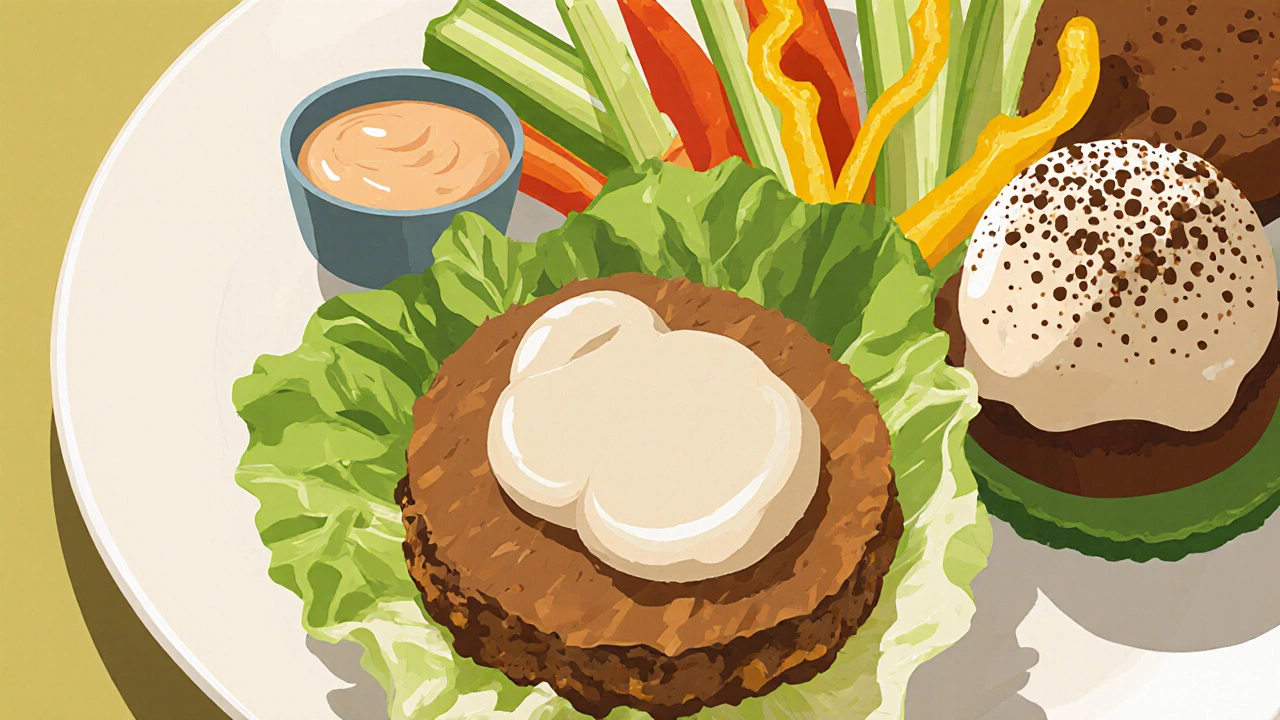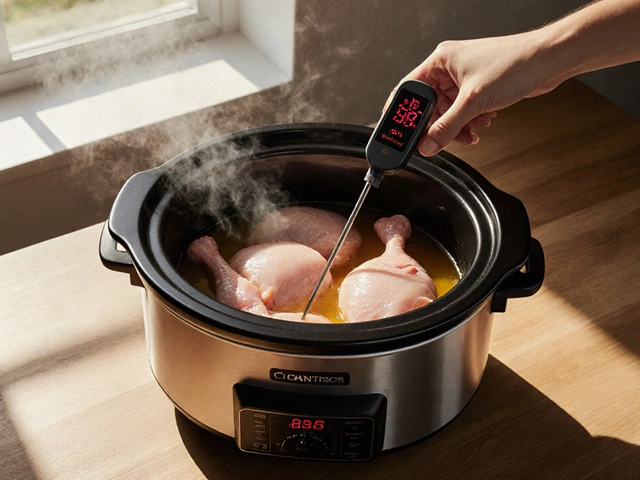
Wondering if you can splash mayo on your burger without blowing your keto macros? The answer isn’t a simple yes or no - it depends on the brand, the ingredients, and how you count carbs. Let’s break down what mayo actually is, how the keto diet treats carbs, and give you practical ways to keep mayo on the table while staying in ketosis.
What is Mayonnaise?
Mayonnaise is a thick, emulsified sauce made primarily from egg yolk, oil, and an acid such as vinegar or lemon juice. The egg yolk acts as an emulsifier, binding the oil and water‑based ingredients into a smooth, stable mixture. Commercial mayo usually contains added salt, sugar, and preservatives, but the core formula remains the same: fat, a tiny amount of protein, and just a pinch of carbs from the acid and any added sweeteners.
Quick Keto Diet Overview
Keto diet is a high‑fat, low‑carbohydrate eating plan that pushes the body into a metabolic state called ketosis. In ketosis, the liver converts fat into ketones, which become the primary fuel for the brain and muscles. To stay in ketosis, most people aim for 20-50 grams of net carbs per day, where net carbs = total carbohydrates minus fiber and certain sugar alcohols.
How Many Carbs Does Store‑Bought Mayonnaise Contain?
Most mainstream brands list 0-1 gram of total carbohydrates per tablespoon, which translates to 0-0.5 grams of net carbs after subtracting fiber (often negligible). However, the devil is in the details: some “light” or “reduced‑fat” versions add sugar or corn syrup solids to improve texture, boosting carbs to 2-3 grams per tablespoon.
| Brand | Total Carbs (g) | Fiber (g) | Net Carbs (g) |
|---|---|---|---|
| Hellmann's Real Mayonnaise | 0 | 0 | 0 |
| Kraft Light Mayo | 2 | 0 | 2 |
| Primal Kitchen Avocado Oil Mayo | 0 | 0 | 0 |
| Chosen Foods 365 Everyday Value Mayo | 0.5 | 0 | 0.5 |
Notice how the avocado‑oil mayo from Primal Kitchen has zero carbs because it skips added sugars entirely. If you’re counting every gram, those brands with 0 carbs are the safest bet for a strict keto plan.

Making Your Own Keto‑Friendly Mayonnaise
Homemade mayo gives you full control over hidden sugars and unhealthy fats. Here’s a simple recipe that stays well under one gram of net carbs per tablespoon.
- Whisk together 1 large egg yolk and 1 tsp vinegar (or lemon juice).
- Slowly drizzle in ½ cup of olive oil or avocado oil while whisking constantly. The mixture will thicken as the oil emulsifies.
- Add a pinch of salt, a dash of mustard (optional, check for added sugar), and if you like a hint of flavor, a few drops of garlic powder.
- Store in an airtight container in the fridge for up to a week.
This mayo packs about 10 g of fat, 0 g carbs, and 0.3 g protein per tablespoon - perfect for keto macros.
Comparison: Store‑Bought vs. Homemade Keto Mayo
| Source | Calories | Total Fat (g) | Total Carbs (g) | Net Carbs (g) |
|---|---|---|---|---|
| Hellmann's Real Mayo | 90 | 10 | 0 | 0 |
| Kraft Light Mayo | 45 | 4 | 2 | 2 |
| Homemade Olive‑Oil Mayo | 95 | 10.5 | 0 | 0 |
| Primal Kitchen Avocado‑Oil Mayo | 80 | 9 | 0 | 0 |
All the zero‑carb options keep you comfortably under your daily net‑carb target, while the light mayo adds extra carbs that could matter on a very low‑carb day.
Using Mayonnaise in Keto Meals
- Salad Dressing: Mix mayo with a splash of vinegar, dijon mustard, and herbs for a creamy, carb‑free dressing.
- Bun Substitute: Spread mayo on lettuce wraps for burgers or hot‑dogs; it adds moisture and flavor without the carbs of a bun.
- Egg Salad: Combine chopped hard‑boiled eggs, mayo, celery, and a pinch of paprika for a quick keto lunch.
- Dipping Sauce: Blend mayo with sriracha (watch for sugar) or chipotle for a spicy, low‑carb dip for veggies.
- Fat Bomb: Whip mayo with cream cheese and cocoa powder for a decadent, keto‑friendly snack.
Because mayo is 100 % fat, it helps you hit your daily fat goal without adding carbs - a win for keto.

Common Pitfalls and How to Avoid Them
- Hidden Sugars: Some “flavored” mayos contain added honey, agave, or dextrose. Always read the nutritional label and ingredient list.
- Portion Overload: Even zero‑carb mayo adds calories. One tablespoon = ~90 calories; two to three servings can quickly blow your daily calorie budget.
- Sugar Alcohols: If a brand uses erythritol or xylitol to sweeten, they count as sugar alcohols. While they don’t raise net carbs for most people, they can cause digestive upset.
- Cross‑Contamination: Using a spoon that previously touched high‑carb foods (like jam) can introduce unwanted carbs.
Quick Keto Mayonnaise Checklist
- Check the label - total carbs ≤ 1 g per tbsp.
- Avoid “light” or “reduced‑fat” versions with added sugars.
- Prefer avocado‑oil or olive‑oil based brands for clean fats.
- Consider homemade mayo for full control over ingredients.
- Measure portions to keep calories in check.
FAQ - Your Mayonnaise‑and‑Keto Questions Answered
Does regular mayonnaise have carbs?
Most standard mayonnaise contains 0 g of total carbs per tablespoon, so the net carb count is also zero. However, always verify the label because some brands add a small amount of sugar.
Can I use mayonnaise on a strict 20‑gram net‑carb keto diet?
Yes, as long as you stick to a zero‑carb mayo and keep your serving size reasonable (1‑2 tbsp per meal). The carbs stay at 0‑2 g, leaving plenty of room for vegetables and other foods.
Is avocado‑oil mayo better than olive‑oil mayo for keto?
Both oils are high in monounsaturated fats and contain virtually no carbs. Avocado oil has a slightly higher smoke point, making it a good choice for cooking, but nutritionally they’re virtually identical for keto.
Do sugar‑free mayo brands use sugar alcohols?
A few low‑carb brands add erythritol or monk fruit to improve flavor. These sugar alcohols typically don’t affect net carbs, but they can cause digestive issues if you consume large amounts.
How long does homemade mayo last in the fridge?
Store it in a clean, airtight jar and it stays good for up to 7 days. If you notice off‑smells or a change in texture, discard it.
Bottom line: Mayonnaise can absolutely fit into a keto lifestyle, as long as you pick the right brand or make it yourself, watch the portion size, and stay vigilant about hidden sugars. With the right choices, mayo becomes a tasty, fat‑rich tool that helps you hit your macros without sacrificing flavor.





